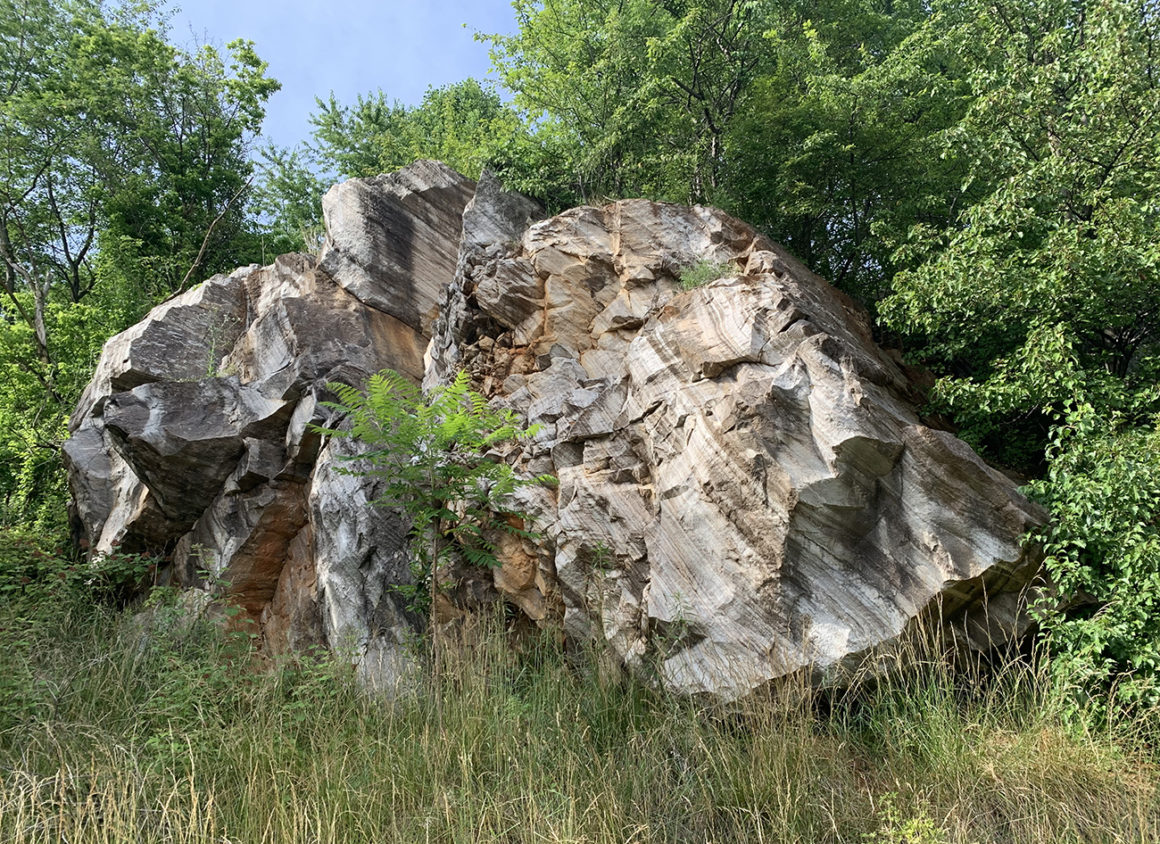Below are 10 interesting geologic features that can be found in Baltimore County, Maryland! For scale my husband (6’6″ tall) and our son (5’6″ tall) appear in some of my photos.
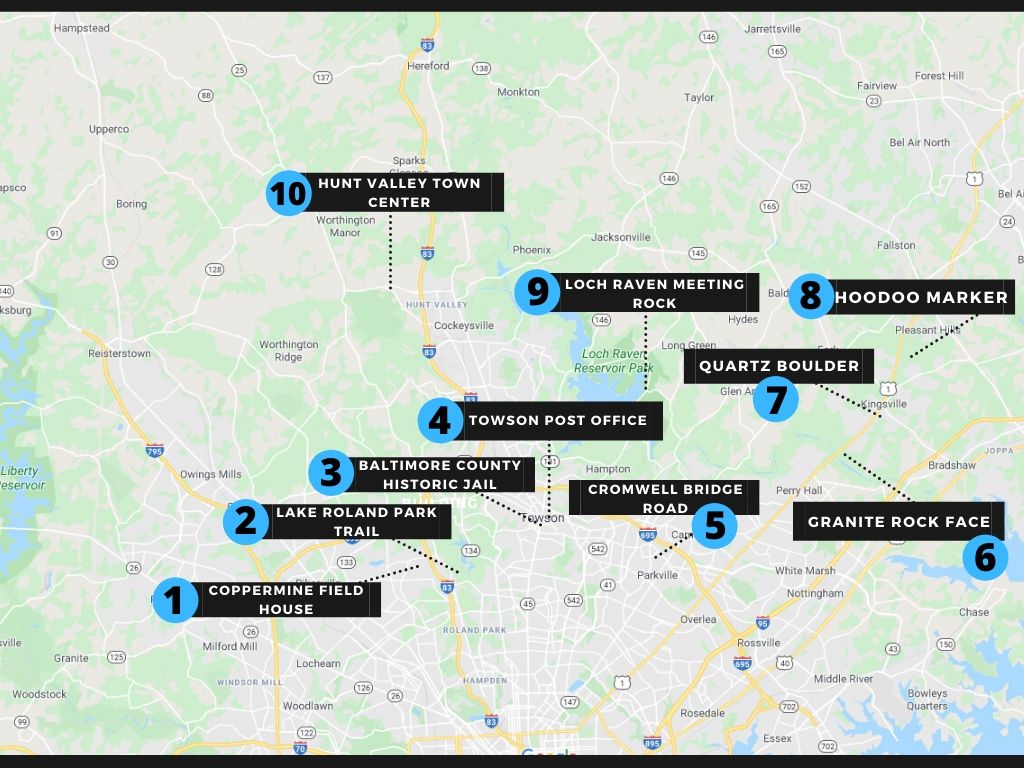
1. Coppermine Field House
Coppermine Field House located at 1400 Coppermine Terrace in Baltimore is an athletics facility off of Falls Road. There I found serpentinite, which is my favorite rock that I’ve observed for this project. Serpentinite has a really unusual green hue and can be found in several other places in Maryland such as Soldier’s Delight Natural Environment Area and the Bare Hills Historic District. The Bare Hills area and the Serpentine Barrens at Soldier’s Delight are named as such because very little vegetation will grow in the sparse and poor quality soil that typically covers serpentinite. Serpentinite is a metamorphic rock and in Maryland, can often found with chromite as well. Soldier’s Delight has old chromite mines that once produced most of the world’s chrome.



2. Lake Roland Park Trail
Next we visited Lake Roland Park’s Greenspring Branch, located at 7000 Falls Road in Towson. These large rocks had a texture with many small holes similar to basalt, but other areas that looked similar to schist, with a flaky texture and mica. Basalt is an extrusive igneous rock and schist is a foliated metamorphic rocks. Based on this information, I don’t think that basalt is a likely identification for a rock in our area – it is more likely schist. This area as well is known for serpentine barrens, and we did find a formation that seemed to have the green hue of serpentinite.
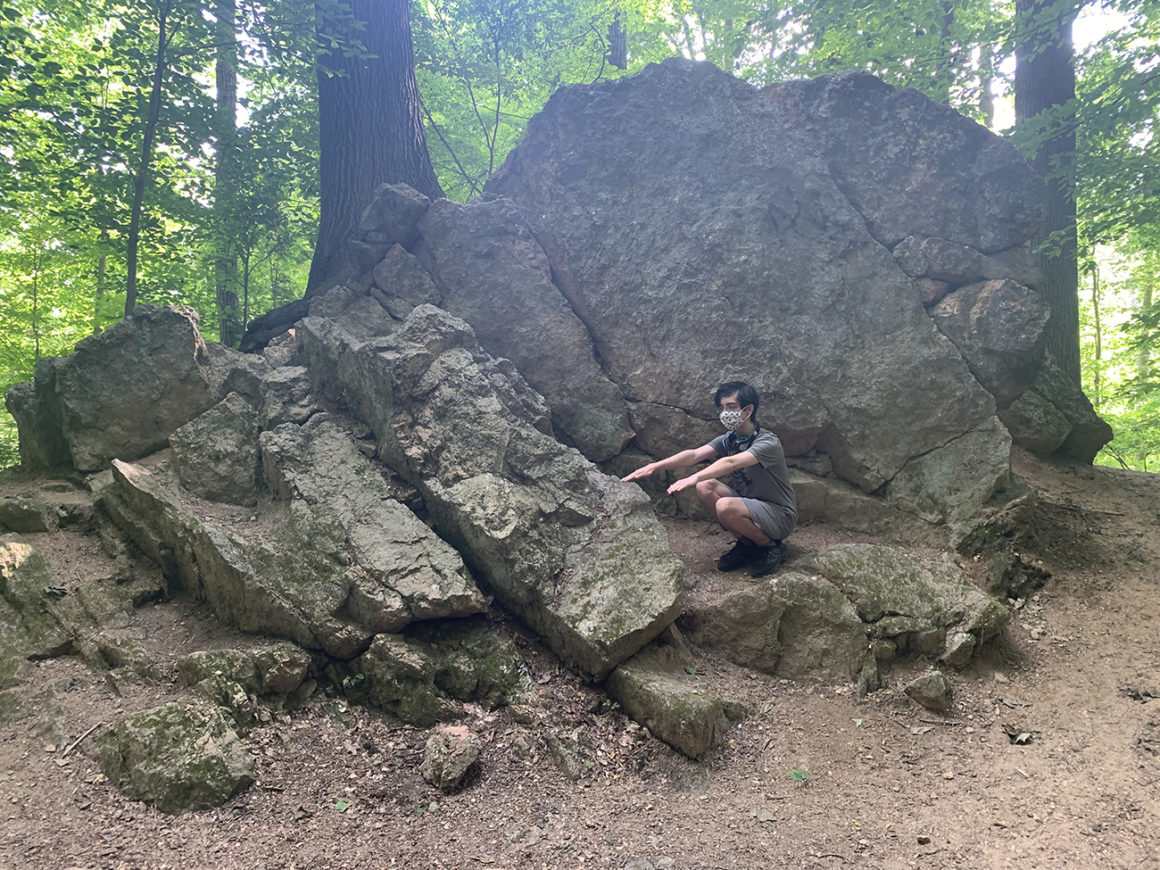


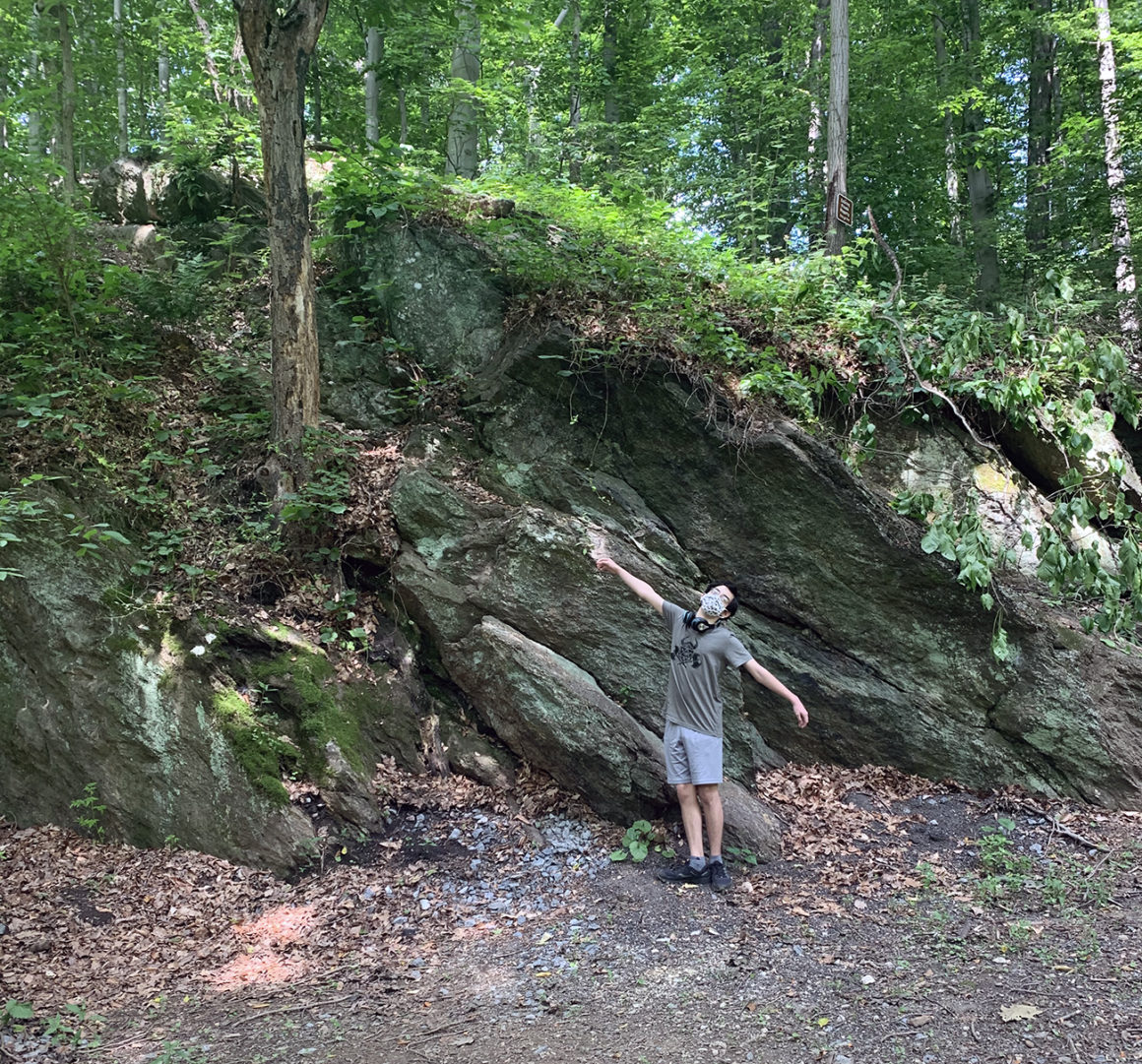
3. Baltimore County Historic Jail Building
The Baltimore County Historic Jail Building is located at 222 Courthouse Court in Towson. I think the stones on this building are sandstone based on the color and grainy texture. Sandstone is a clastic sedimentary rock, which means it is comprised of small pieces of other types of rocks. It can be found in varying colors because it is impacted by the mineral content of a particular sample. On the hardness scale, sandstone is a 6 or 7 and is very resistant to weathering, making it an excellent building material.



4. Towson Post Office
The Towson Post office is located at 101 West Chesapeake Avenue in Towson and is made of limestone. Limestone is a non-foliated sedimentary rock that is commonly used for building, including as an ingredient in cement. It has a grainy texture and contains very small fragments of fossilized animal shells and coral, making it a clastic rock. Limestone can be worn down eventually by water and because of this, we have many limestone caves in the region, particularly in western Maryland.


5. Cromwell Bridge Road
Off of Cromwell Bridge Road in Towson, there is a steep slope with a winding road that leads to a shopping center located at 1125 Cromwell Bridge Road. This slope contains patches of rocks that appear to be slate or shale based on their smooth surface, layers, and medium to dark gray color. Slate is a foliated metamorphic rock, and shale is its protolith.
This was some sort of funny pose, he was not falling or in any sort of danger!



6. Granite Rock Face
This granite rock face caught my attention because of the drilling lines that can be easily seen running vertically through the rock. This drilling and blasting method is called pre-split and it is utilized to create a flat surface. Granite is a felsic intrusive igneous rock and can present in several different colors depending on the specific mineral content. It can contain bits of quartz and mica, giving it a small amount of luster. A large amount of granite runs through this area in an arc from the DC area toward the northeast corner of the state.
A street sign is used for scale here, as we were not able to get out and explore more due to ongoing construction in the area. This area can be found just north of the intersection of Belair Road and Miller Road in Kingsville.

7. Large Quartz Rock
A short drive down Belair Road, we found this beautiful, large quartz rock. Quartz is a felsic mineral made of silica and oxygen ions that is plentiful all around the world. It can be found in a wide variety of colors, and it is used in a range of products from jewelry to countertops to sandpaper. Quartz is so useful because it is a very hard stone – a 7 on the Moh’s Hardness Scale. You can find these quartz rocks in front of the BGE Perry Hall Service Center at 9701 Belair Road in Nottingham.


8. The Kingsville Hoodoo Marker
The Kingsville Hoodoo Marker is a property boundary marker placed in 1810 with an interesting backstory and perhaps a warning to neighbors:
“This stone is in place of a double poplar tree, a boundary of expectation francis freedom alias young’s escape and the second boundary of onion’s prospect hill, the latter now owned by Edward Day. Cursed be he that removeth his neighbor’s landmark and all the people shall say amen. Deuteronomy chap 27 verse 17.”
Since the boundary marker now sits next to a veterinary’s office located at 12301 Belair Road in Kingsville, it seems that the curse has been taken seriously all these years. The boundary marker appears to be made of gabbro. Gabbro is an intrusive igneous rock that can be found locally and consists of dark gray rock with flecks of quartz. It is a very strong, hard rock that can be used in construction applications such as roads.
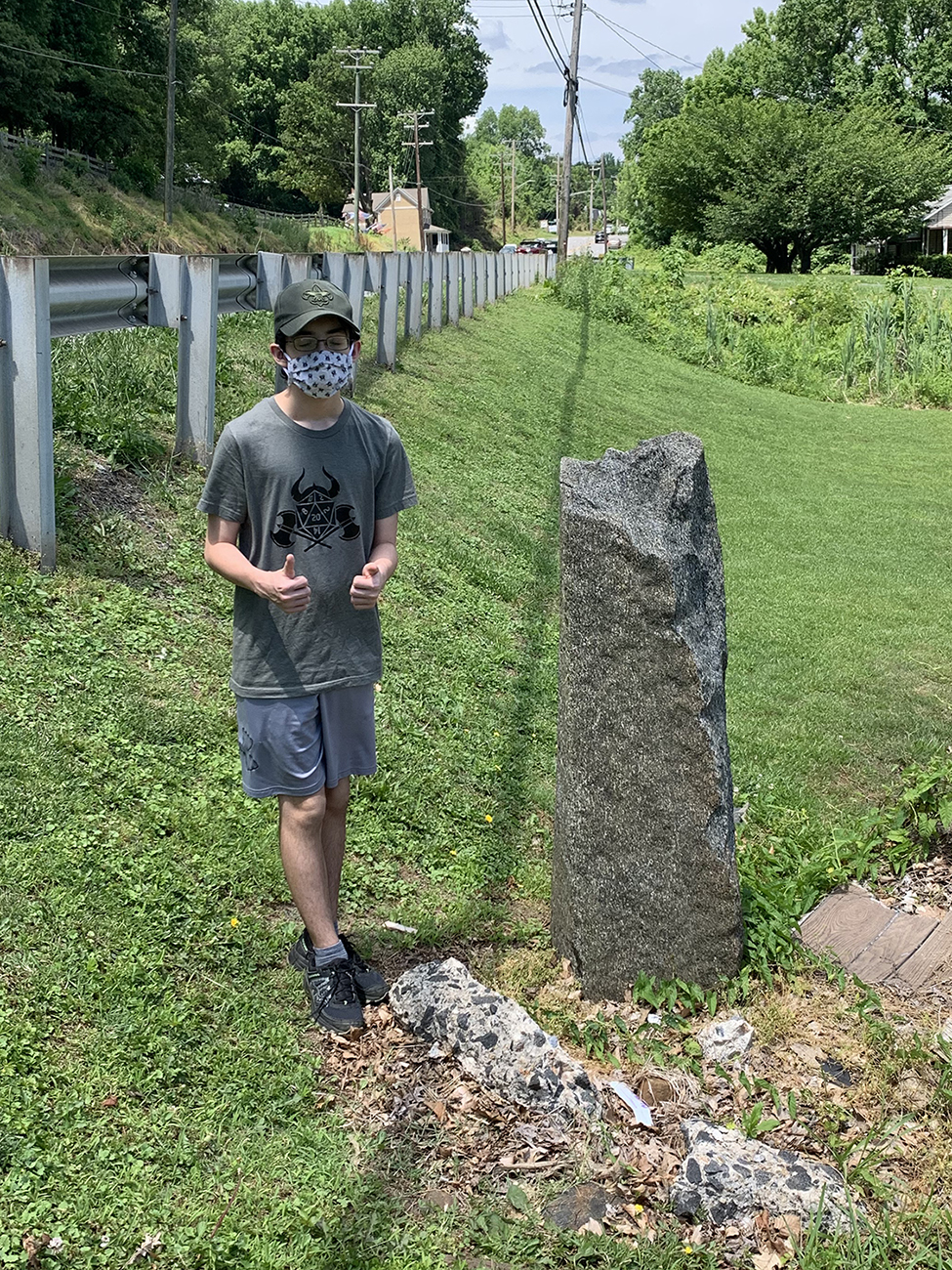


9. Loch Raven Meeting Rock
These rocks, located at the intersection of Loch Raven Drive and Morgan Mill Road, have been deemed “the meeting rock” based on where we’ve met with various friends and running groups to run the loop and trails of Loch Raven Reservoir. I think they are gneiss based on the lighter stripes that can be most easily seen in the third photo below. Gneiss is a foliated metamorphic rock. Its protoliths can be granite or rhyolite and it is a common type of rock in Maryland and the surrounding states. It has been mined since the late 1800s and is used often as a building stone.



10. Hunt Valley Town Center
Behind Hunt Valley Town Center is a steep slope with exposed marble that peeks out between trees and other vegetation. Marble is a non-foliated metamphoric rock that is used often in construction as building blocks, as well as for decorative purposes. It is a 3 on the hardness scale, making it an ideal material for sculptures. It’s parent rock is limestone, and with increasing heat and pressure the limestone eventually becomes marble.

